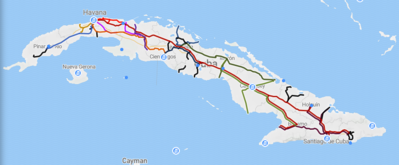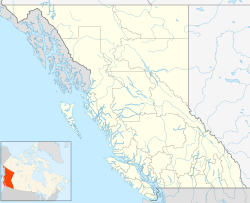Baratt 임펄시성 척도
Barratt Impulsiveness ScaleBIS(Barat Impulsibility Scale)는 일반적으로 사용되는 충동성 척도다. 1차 요인 6개(주의, 운동, 자기통제, 인지 복잡성, 인내성, 인지 불안정성 충동성)와 2차 요인 3개(주의, 운동, 비계획적 충동성)를 산출하도록 채점된 30개 항목을 포함한다.[1]
BIS는 충동적인 성격 특성에 대한 가장 널리 사용되는 자기 보고 수단이다.[2] 2008년 6월 현재 지식의 웹(학술 인용 색인화 및 검색 서비스)은 제11판 Barratt 충동성 척도의 인자 구조를 정의한 1995년 기사의 457개 저널을 집계했다. 처음에 미국 States,[1]에서 발전 BIS-11 세계 널리, Australia,[3]Belgium,[4]Brazil,[5]Canada,[6]China,[7]Estonia,[8]France,[9]Germany,[10]Greece,[11]Israel,[12]Italy,[13]Japan,[14]Korea,[15]Netherlands,[16]Scotland,[17]Spain,[18]Switzerland,[19]Taiwan,[20]Turkey,는 경우에는 일반인 등 적용되어 왔다.Ation 해결과 영국이 필요했다.[21]
저울의 첫 번째 버전인 BIS-1은 1959년에 출시되었다. 두 번째 버전인 BIS-11은 1995년에 출시되었다.[1]
점수 매기기
BIS-11은 30개 항목의 자체 보고 설문지로 총점 3개, 2차 요인 3개, 1차 요인 6개를 산출하도록 채점돼 있다. 그 질문들은 1995년 참고문헌에 실렸다. 다음은 각 요소 점수에 기여하는 항목의 목록이다.[2]
| 2차 요인 | 항목 내용 |
|---|---|
| 주의사항: | 5, 6, 9*, 11, 20*, 24, 26, 28 |
| 모터: | 2, 3, 4, 16, 17, 19, 21, 22, 23, 25, 30* |
| 계획 없음: | 1*, 7*, 8*, 10*, 12*, 13*, 14, 15*, 18, 27, 29* |
| 1차 요인 | 항목 내용 |
|---|---|
| 주의사항: | 5, 9*, 11, 20*, 28 |
| 모터: | 2, 3, 4, 17, 19, 22, 25 |
| 자체 제어: | 1*, 7*, 8*, 12*, 13*, 14 |
| 인지 복잡성: | 10*, 15*, 18, 27, 29* |
| 인내: | 16, 21, 23, 30* |
| 인지 불안정성: | 6, 24, 26 |
유효성
패튼 외 연구진은 BIS-11 총점에 대한 내부 일관성 계수를 보고했는데, 이 계수는 중졸 이하 학생, 약물 남용 환자, 일반 정신과 환자, 교도소 수감자의 별도 모집단에 대해 0.79 - 0.83이다.[1]
참조
- ^ a b c d Patton, J.H.; Stanford, M.S.; Barratt, E.S. (November 1995). "Factor structure of the Barratt Impulsiveness Scale". Journal of Clinical Psychology. 51 (6): 768–74. doi:10.1002/1097-4679(199511)51:6<768::AID-JCLP2270510607>3.0.CO;2-1. PMID 8778124.
- ^ a b "BIS 11". International Society for Research on Impulsivity website. Retrieved 2013-09-17.
- ^ Gomez, R.; Cooper, A.; Gomez, A. (August 2000). "Susceptibility to positive and negative mood states: Test of Eysenck's, Gray's and Newman's theories". Personality and Individual Differences. 29 (2): 351–65. doi:10.1016/S0191-8869(99)00198-1.
- ^ Dom, G.; Hulstijn, W.; Sabbe, B. (February 2006). "Differences in impulsivity and sensation seeking between early-and late-onset alcoholics". Addictive Behaviors. 31 (2): 298–308. doi:10.1016/j.addbeh.2005.05.009. PMID 15949898.
- ^ Martins, S.S.; Tavares, H.; da Silva Lobo, D.S.; Galetti, A.M.; et al. (August 2004). "Pathological gambling, gender, and risk-taking behaviors". Addictive Behaviors. 29 (6): 1231–5. doi:10.1016/j.addbeh.2004.03.023. PMID 15236828.
- ^ Steiger, H.; Koerner, N.; Engelberg, M.J.; Israël, M.; Ng Ying Kin, N.M.; Young, S.N. (August 2001). "Self-destructiveness and serotonin function in bulimia nervosa". Psychiatry Research. 103 (1): 15–26. doi:10.1016/S0165-1781(01)00264-5. PMID 11472787.
- ^ Yao, S.; Yang, H.; Zhu, X.; Auerbach, R.P.; et al. (June 2007). "An examination of the psychometric properties of the Chinese version of the Barratt Impulsiveness Scale, 11th version in a sample of Chinese adolescents". Perceptual and Motor Skills. 104 (3c): 1169–82. doi:10.2466/pms.104.4.1169-1182. PMID 17879649.
- ^ Paaver, M.; Nordquist, N.; Parik, J.; Harro, M.; et al. (November 2007). "Platelet MAO activity and the 5-HTT gene promoter polymorphism are associated with impulsivity and cognitive style in visual information processing". Psychopharmacology. 194 (4): 545–54. doi:10.1007/s00213-007-0867-z. PMID 17628790.
- ^ Lejoyeux, M.; Feuché, N.; Loi, S.; Solomon, J.; et al. (November 1998). "Impulse-control disorders in alcoholics are related to sensation seeking and not to impulsivity". Psychiatry Research. 81 (2): 149–55. doi:10.1016/S0165-1781(98)00103-6. PMID 9858032.
- ^ Cima, M.; Merckelbach, H.; Hollnack, S.; Knauer, E. (2003). "Characteristics of psychiatric prison inmates who claim amnesia". Personality and Individual Differences. 35 (2): 373–80. doi:10.1016/S0191-8869(02)00199-X.
- ^ Giotakos, O.; Markianos, M.; Vaidakis, N.; Christodoulou, G.N. (2003). "Aggression, impulsivity, plasma sex hormones, and biogenic amine turnover in a forensic population of rapists". Journal of Sex & Marital Therapy. 29 (3): 215–25. doi:10.1080/00926230390155113. PMID 12851126.
- ^ Glicksohn, J.; Leshem, R.; Aharoni, R. (January 2006). "Impulsivity and time estimation: Casting a net to catch a fish". Personality and Individual Differences. 40 (2): 261–71. doi:10.1016/j.paid.2005.07.003.
- ^ Fossati, A.; Di Ceglie, A.; Acquarini, E.; Barratt, E.S. (June 2001). "Psychometric properties of an Italian version of the Barratt Impulsiveness Scale-11 (BIS-11) in nonclinical subjects". Journal of Clinical Psychology. 57 (6): 815–28. doi:10.1002/jclp.1051. PMID 11344467.
- ^ Someya, T.; Sakado, K.; Seki, T.; Kojima, M.; et al. (April 2001). "The Japanese version of the Barratt Impulsiveness Scale, 11th version (BIS-11): Its reliability and validity". Psychiatry and Clinical Neurosciences. 55 (2): 111–4. doi:10.1046/j.1440-1819.2001.00796.x. PMID 11285088.
- ^ Hong, S.; Jang, H. (December 2004). "Segmentation of early casino markets: An exploratory study". Tourism Management. 25 (6): 801–5. doi:10.1016/j.tourman.2003.09.002.
- ^ Bekker, M.H.J.; van de Meerendonk, C.; Mollerus, J. (December 2004). "Effects of negative mood induction and impulsivity on self-perceived emotional eating". International Journal of Eating Disorders. 36 (4): 461–9. doi:10.1002/eat.20041. PMID 15558635.
- ^ Cairns, J.; van der Pol, M. (June 2004). "Repeated follow-up as a method for reducing non-trading behaviour in discrete choice experiments". Social Science & Medicine. 58 (11): 2211–18. doi:10.1016/j.socscimed.2003.08.021. PMID 15047078.
- ^ Baca-Garcia, E.; Vaquero, C.; Diaz-Sastre, C.; Garcı́a-Resa, E.; et al. (April 2004). "Lack of association between the serotonin transporter promoter gene polymorphism and impulsivity or aggressive behavior among suicide attempters and healthy volunteers". Psychiatry Research. 126 (2): 99–106. doi:10.1016/j.psychres.2003.10.007. PMID 15123389.
- ^ Billieux, J.; Rochat, L.; Rebetez, M.M.L.; Van der Linden, M. (April 2008). "Are all facets of impulsivity related to self-reported compulsive buying behavior?". Personality and Individual Differences. 44 (6): 1432–42. doi:10.1016/j.paid.2007.12.011.
- ^ Ray Li, C.S.; Chen, S.H.; Lin, W.H.; Yang, Y.Y. (2005). "Attentional blink in adolescents with varying levels of impulsivity". Journal of Psychiatric Research. 39 (2): 197–205. doi:10.1016/j.jpsychires.2004.06.003. PMID 15589569.
- ^ Cleare, A.J.; Bond, A.J. (March 2000). "Ipsapirone challenge in aggressive men shows an inverse correlation between 5-HT1A receptor function and aggression". Psychopharmacology. 148 (4): 344–9. doi:10.1007/s002130050061. PMID 10928305.


